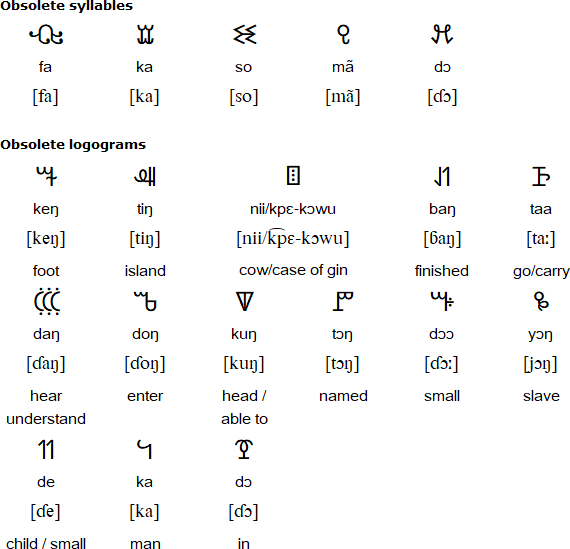The Vai syllabary was invented in about 1833 in Liberia by Mɔmɔlu Duwalu Bukɛlɛ, who was inspired by a dream to create a writing system for the Vai language. In 1854 a German philologist, S. W. Koelle, met Duwalu Bukele while researching the Vai language. He was told that in Bukele's dream a tall, venerable-looking white man in a long coat appeared and said "I am sent to you by other white men ... I bring you a book." Bukɛlɛ was then shown many signs, but couldn't remeber them when he woke up, so he made new signs with some friends.
Another theory is that the Vai syllabary was inspired by the Cherokee syllabary. A number of Cherokee emigrated to West Africa in the early 19th century. One of them, Austin Curtis, married a Vai woman from an influential family and became a Vai chief. It is possible that he was involved in some ways with the creation of the Vai syllabary.
The syllabary proved popular with the Vai and by the end of the 19th century most of them were using it. In 1962 the Standardization Committee at the University of Liberia standardized the syllabary. A Vai version of the New Testament in the Vai script was published in 2003.

These syllables were used in a text written in about 1845 called the Book of Ndole or Book of Rora by Kaali Bala Ndole Wano, a cousin of Mɔmɔlu Duwalu Bukɛlɛ.


Vai digits were developed in the 1920s, but are not used in written Vai. Western numerals (1, 2, 3) are used instead.

Download script charts for Vai (Excel)

Adhama deng nu gbi tong manja deng nu wa anuan wooloo kiiye fe, amu bee sii londoe wa be anuan koowa. anda koo temaan lo ka so amu anu fala be. Koomu anuhin koo nu tahaye lei la kemu nehin nyoon la kung tiya anu te.
All human beings are born free and equal in dignity and rights. They are endowed with reason and conscience and should act towards one another in a spirit of brotherhood.
(Article 1 of the Universal Declaration of Human Rights)
Information about Vai | Vai syllabary | Phrases | Numbers
Information about the Vai syllabary
http://en.wikipedia.org/wiki/Vai_syllabary
http://scriptsource.org/cms/scripts/page.php?item_id=script_detail&key=Vaii
https://scripts.sil.org/cms/scripts/page.php?item_id=VaiUnicode
https://www.discovermagazine.com/planet-earth/african-script-sheds-light-on-evolution-of-writing
Free Vai fonts
http://scripts.sil.org/cms/scripts/page.php?site_id=nrsi&item_id=SILVai
https://evertype.com/fonts/vai/
Afaka, Bamum, Caroline Island Script, Celtiberian, Cherokee, Cypriot, Dunging (Iban), Eskayan, Hiragana, Iberian, Katakana, Kpelle, Loma, Mende (Kikakui), Mwangwego, Nüshu, Nwagụ Aneke, Vai, Yi, Yugtun
Page last modified: 15.03.23
[top]
You can support this site by Buying Me A Coffee, and if you like what you see on this page, you can use the buttons below to share it with people you know.

If you like this site and find it useful, you can support it by making a donation via PayPal or Patreon, or by contributing in other ways. Omniglot is how I make my living.
Note: all links on this site to Amazon.com, Amazon.co.uk
and Amazon.fr
are affiliate links. This means I earn a commission if you click on any of them and buy something. So by clicking on these links you can help to support this site.
[top]